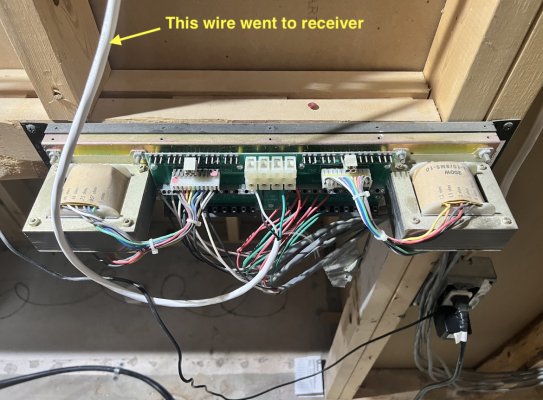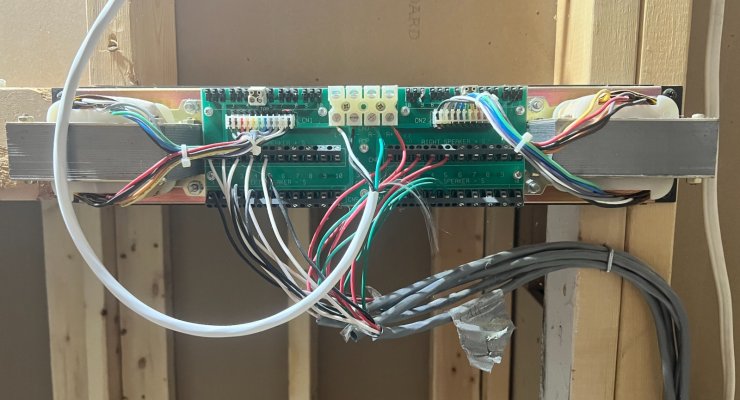Ronstar
Moderator Emeritus
We have 4 rooms with in wall/ceiling speakers in addition to a home theater system. All used to work fine through a 2 zone receiver. The receiver died and I just wanted to get the home theater going so I just bought a home theater receiver. Haven't listened to room audio since.
I'd like to get the 4 rooms going again with audio. Our home theater receiver is an inexpensive Sony STR DH590 that I don't believe is capable of adding 8 speakers to.
I do have this amp? Junction box? where the 4 room speakers come together and leave as a single 4 conductor audio cable.
My question is - What do I need to get this running? Seems like I need a separate audio receiver and I should be able to make this work. Unless I can wire it up to the existing home theater receiver, but it has all speaker ports occupied.
I'd like to get the 4 rooms going again with audio. Our home theater receiver is an inexpensive Sony STR DH590 that I don't believe is capable of adding 8 speakers to.
I do have this amp? Junction box? where the 4 room speakers come together and leave as a single 4 conductor audio cable.
My question is - What do I need to get this running? Seems like I need a separate audio receiver and I should be able to make this work. Unless I can wire it up to the existing home theater receiver, but it has all speaker ports occupied.


